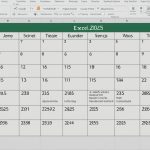As dog owners, it’s crucial to understand that playing is not just about fun for our puppies. It’s an essential part of their developmental process, helping them learn and grow both physically and mentally. Setting up a safe and stimulating play area for them is, therefore, of paramount importance. In this article, we will guide you on how to create the perfect playground for your young furry friends.
Understanding the Importance of a Play Area
Before we delve into how to set up a play area, it’s important to comprehend the significance of a play area for your young puppies. A play area is not merely a space for your puppies to kill time, but a conducive environment where they learn to socialize, discover new things, and exercise – all while having fun.
A lire également : What Are the Key Diet Considerations for a Cat with Hyperthyroidism?
A designated play area provides your puppies with a sense of security and belonging. As young puppies are curious and active, they are likely to get themselves into dangerous situations. A well-thought-out play area ensures they are safe while exploring and playing.
On top of safety, a play area should also be filled with stimulating toys and activities that can keep your puppies engaged for hours. These toys and activities are vital for their mental development as they challenge and improve their problem-solving skills.
A lire également : How to Choose the Right Type of Bird Feeder for an African Grey Parrot?
Choosing the Appropriate Space and Size
The first step in setting up a play area is to select an appropriate space. The chosen space should be easily accessible, well-ventilated, and free from any hazards. Avoid places near stairs, windows, or heavy furniture that can accidentally tip over.
The size of the play area depends on the size of your puppy and how many puppies will be using the space. As a rule of thumb, the play area should be spacious enough for your puppies to move around freely, play, sleep, and eat without feeling cramped.
Remember that your puppies will grow quickly, so it’s wise to consider a space that can accommodate them as they grow. A playpen or a baby gate can be used to demarcate the play area and keep your puppies confined safely.
Setting Up the Play Area: Safety First
Once you’ve chosen an appropriate space, it’s time to puppy-proof the area. Just like baby-proofing a home for a toddler, puppy-proofing involves removing potential hazards that your curious puppy might chew on or swallow, such as electrical cords, small objects, toxic houseplants, and cleaning chemicals.
The flooring of the play area should be non-slip to prevent your puppies from slipping and sliding, which can lead to injuries. Carpets, rugs, or rubber mats are ideal choices for flooring as they provide traction and are comfortable for your puppies to lie on.
Ensure that the play area is well-lit and at a comfortable temperature. The area should neither be too hot nor too cold. If the play area is outdoors, make sure it’s shaded and protected from harsh weather elements.
Choosing the Right Toys and Equipment
Toys and equipment are vital components of a stimulating play area. Choose toys that are appropriate for your puppies’ age and size. They should be big enough not to be swallowed but small enough for your puppies to chew and play with comfortably.
Interactive toys such as puzzle toys, chew toys, and soft toys are great choices. They not only keep your puppies entertained but also stimulate their minds and satisfy their inherent need to chew.
Equipment such as tunnels, ramps, and activity mats are also excellent additions to the play area. They encourage physical activity and help to develop your puppies’ coordination and balance. Remember, however, these should be used under supervision to ensure safety.
Incorporating Training into Playtime
Never underestimate the power of play when it comes to training your puppy. A play area can act as a training ground where your puppy learns essential commands and behaviors.
To effectively incorporate training into playtime, you could use toys as rewards. For example, if your puppy successfully follows a command, reward them with their favorite toy. This not only reinforces the behavior but also keeps playtime exciting and rewarding.
Remember to keep training sessions short and positive, never forcing your puppy to do anything they’re uncomfortable with. Patience and consistency are key when training your puppy.
Creating a safe and stimulating play area for your young puppies requires careful planning and thoughtful consideration. By following the above steps, you can create a space that not only provides endless hours of fun for your puppies but also contributes to their overall growth and development.
Providing Proper Supervision in the Play Area
To ensure utmost safety and security, your puppies’ play area must not be left unsupervised. Remember, your young puppies are just like toddlers who are curious and still learning about their surroundings. Therefore, your presence is crucial to prevent any accidents and to guide them while they explore.
Monitor your puppies while they play with their toys or equipment. You need to watch for signs of choking or any other dangers that may arise from broken or damaged toys. Additionally, you should also be on the lookout for any aggressive behavior amongst the puppies. Early detection of such behavior can help in curbing it and promoting positive interactions.
Furthermore, supervision also offers the opportunity to bond with your puppies. You can engage in play with them, which will not only make playtime more fun but also reinforce your bond. In doing so, you’re also teaching them to trust you, which is beneficial for future training and social interactions.
Lastly, don’t forget to clean the play area regularly. Puppies can be messy, and a clean environment is essential for their health. Regularly check for any soiled areas, leftover food, and chewed toys. Discard any damaged toys immediately to prevent choking hazards.
Regularly Updating the Play Area
As your puppies grow, their needs and interests will change. Therefore, regularly updating the play area is necessary to keep it stimulating and engaging. Toys that were once loved can become boring, and equipment that was once challenging may become too easy. Regular modifications can keep your puppies excited and eager for playtime.
Updating the play area also includes changing the space as your puppies grow. Your play area needs to be spacious enough for them to move around freely. You may need to adjust the size of the play area or even relocate it to a larger space as your puppies grow.
Remember, always introduce any new toys or equipment slowly and under supervision. Watch for any signs of fear or anxiety and remove any items that seem to cause these reactions.
Conclusion
In essence, creating a safe and stimulating play area for young puppies involves meticulous planning and ongoing adjustments. Providing an engaging, hazard-free space for your puppies not only contributes to their development but also ensures their safety. Remember, an active puppy is a happy puppy. Therefore, a well-designed play area can leave you with a well-adjusted, fit, and happy furry friend. Through careful selection of toys, regular updates, and diligent supervision, you can ensure that your puppies make the most out of their playtime in a safe environment.











